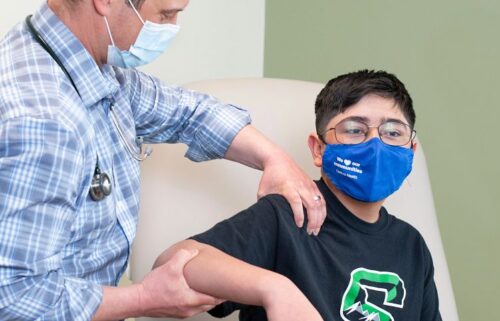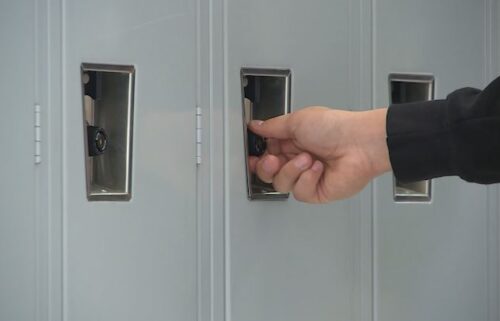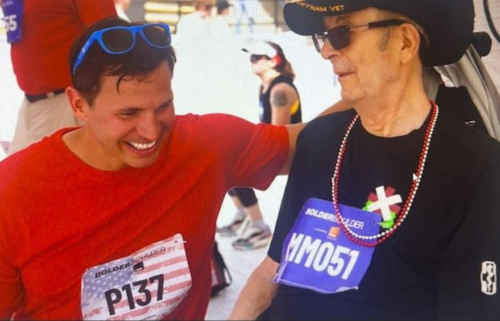Gun-loving Texas, where most households own a firearm, has become an epicenter of mass shootings
By Emma Tucker, CNN
(CNN) — Five of the 10 deadliest mass shootings in America over the past eight years have been in Texas, the latest occurring in Allen in early May when a gunman fired an AR-15-style rifle at a crowded outlet mall, killing eight people and injuring at least seven others.
The number of mass shootings in Texas is no coincidence given the sheer number of guns in the hands of the public, several gun violence experts told CNN.
Texas has among the most expansive gun rights in the country – roughly 60% of households own at least one gun, according to an Everytown for Gun Safety analysis of 2021 data from the Centers for Disease Control and Prevention. That’s the second-highest rate in the country and above the national average of 55% of households owning one or more guns, according to Everytown.
There is a direct correlation between states with weaker gun laws and higher rates of gun deaths, according to a study first published by Everytown in 2021. That relation is evident in Texas, where the number of mass shootings has tripled in the past five years, while mass shootings nationwide have nearly doubled from 2018 through the end of last year, according to data compiled by the Gun Violence Archive (GVA).
CNN and the GVA define a mass shooting as a shooting that injures or kills four or more people, not including the shooter.
The deadliest US shooting this year, however, took place in California – a state that advocacy groups say has some of the strictest gun laws in the country – in Monterey Park, when 11 people were killed and nine injured at a Lunar New Year celebration in January.
Despite the rise of high-profile mass shootings in Texas – including in Uvalde, where a shooter opened fire in Robb Elementary School last May, killing 19 children and two teachers – the state has repeatedly loosened restrictions on gun ownership in recent years.
In September 2021, for example, legislation went into effect allowing most Texans who legally own a firearm to carry it openly in public without obtaining a permit or training, a measure Dallas Police Chief Eddie Garcia said makes it harder for law enforcement to differentiate a “good guy with a gun from a bad guy with a gun.”
Republican supporters of the legislation, however, have argued that by removing the licensing requirement, they are removing an “artificial barrier” to residents’ right to bear arms under the Constitution and ensuring more Texans have access to “the protection of themselves or their families” in public.
“If you possess a firearm, you should be able to carry a firearm,” state Sen. Charles Schwertner, a Republican, previously said.
Meanwhile, the rate of gun homicides in Texas has increased more than 90% from 2012 to 2021, compared to a 73% increase nationwide, according to an analysis by Everytown of CDC data, which tracks homicides, accidental killings and suicides committed by guns.
In April, Texas led the nation with 108,224 gun sales, and more than 430,000 guns have been sold in the state so far this year, according to The Trace, an independent news operation dedicated to covering America’s gun violence epidemic, which used the FBI’s National Instant Criminal Background Check System (NICS). Additionally, Texas does not require background checks for all gun transfers, paving the way for people to potentially obtain guns in the illegal gun market, according to experts.
Gun rights advocates and conservatives, including Republican Gov. Greg Abbott, have continued to advocate for weaker gun laws. They argue that more firearms and higher gun ownership increases public safety – a stance that continues to be at odds with gun violence experts and data.
In the wake of the mass shooting in Allen and several others, Abbott and his constituents have tried to shift the focus to mental illness as one of the main drivers of gun violence. That argument, however, is fiercely contested by gun violence and policy experts, who say the two crises are separate public health issues with only some overlap.
“Over and over again, Governor Abbott has put gun maker profits above public safety – statistics and data be damned,” said Shannon Watts, the founder of Moms Demand Action, which has been fighting for gun safety measures since the 2012 Sandy Hook Elementary School shooting in Connecticut that killed 20 children and six educators.
“Every time there’s a shooting tragedy in Texas, the governor and his Republican allies, whether they are in state or federal government, point the finger at something that has no data to prove it’s actually the cause, whether it’s mental illness, single parent homes, violent video games, too many exit doors, not enough exit doors. The list goes on,” Watts said.
Texas is no stranger to mass shootings
The gunman in the mass shooting in Allen, 33-year-old Mauricio Garcia, purportedly wrote online of his support for Nazi ideology before he got out of his car in the Dallas suburb and started firing an AR-15-style rifle, according to authorities.
Garcia had eight weapons with him – three on his person and five in his vehicle – all of which were legally obtained, according to Texas Department of Public Safety Regional Director Hank Sibley.
The victims killed in Allen included children and relatives out shopping together who were killed. At least seven more were injured in the massacre, which lasted three to four minutes before an unidentified Allen police officer at the mall sprinted to the scene and killed the gunman, state officials said.
Once again, people engaged in routine activities, like a trip to the supermarket or a Sweet 16 party, had their lives ripped apart by a US mass shooting.
“We get upset about a mass shooting because it’s so frightening and disturbing and irrational – everything we don’t want ordinary life to be,” said Jeffrey Swanson, a professor of psychiatry and behavioral sciences at Duke University who specializes in gun violence and mental illness.
“But on the day of any of those shootings, we have 140 other people die all around the United States. That’s the drip, drip, drip of gun violence. We need a change in our culture,” Swanson said.
The death toll from mass shootings in Texas stands apart, with the recent events in Uvalde and Allen, in addition to nine killed in a Waco bar in 2015; 26 people killed at a church in Sutherland Springs in 2017; 10 killed at a Santa Fe high school in 2018; and 23 people killed at an El Paso shopping center in 2019.
The shootings in Uvalde and a supermarket in Buffalo, New York, that same month fueled the massive public outcry by many Democrats, gun safety advocates, gun violence experts, parents and entire communities, putting intense pressure on lawmakers to enact stricter gun measures.
Then, in June last year, President Joe Biden signed into law the Bipartisan Safer Communities Act – the most significant new federal legislation to address gun violence since the expired 10-year assault weapons ban of 1994. The legislation included incentives for states to pass red flag laws and funding to implement crisis intervention programs, but the law failed to ban any weapons.
The tragedies in El Paso and West Texas in 2019 – when a gunman killed seven people in a shooting spree in Midland and Odessa – prompted Abbott and Lt. Gov. Dan Patrick to briefly consider a gun control proposal that would make it harder for Texans to buy a firearm. But during his annual State of the State address in 2021, Abbott stressed the need to “erect a complete barrier against any government official anywhere from treading on gun rights in Texas.”
“Regardless of political party, parents are scared to send their kids to schools,” Watts said. “And if your kids aren’t safe, you can’t really focus on any other issue. These shooting tragedies are making single issue voters out of Americans.”
Abbott blames mental health issues, but questions raised about funding
One day after the massacre in Allen, Abbott again called attention to mental health in an interview on “Fox News Sunday,” saying there’s an increase in “anger and violence” and the root cause is “mental health problems.”
The governor’s statements to increase funding for mental health services echo those he made two days after the Uvalde shooting at a news conference, when he claimed it’s a “mental health challenge” whenever someone uses a gun to shoot someone else, CNN previously reported.
Despite the governor’s vows to address gaps in mental health services, Abbott redirected roughly $211 million from the Health and Human Services Commission, the state agency that oversees mental health services in the state, less than one month before the Uvalde shooting, according to CNN affiliate WFAA.
The state funding provided to the agency was swapped with federal aid that was allocated to Texas to help it recover from the pandemic, WFAA reported. Abbott then wrote a letter to state leaders saying the transfer of funds “will not affect any agency or program function,” according to WFAA.
In a statement to CNN, Andrew Mahaleris, a spokesperson for Abbott, said the governor “did not, in no uncertain terms, cut funding from mental health services being provided for Texans. Governor Abbott has always worked diligently to fully fund and expand mental health programs and services for Texans.”
Texas also has no red flag law – also known as an extreme risk protection order – which allows law enforcement, family members or a household member to petition a judge to temporarily seize a person’s firearms if they are deemed a risk. Extreme risk laws have been shown to reduce firearm suicide rates in Connecticut by 14% and Indiana by 7.5%, according to Giffords Law Center data between 1981 and 2015.
There is no research that shows mental illness is causing America’s gun violence crisis, according to Swanson. The mental health system is fragmented and overburdened, he said, and many people with serious mental illnesses that “impair the brain’s ability to reason and perceive reality and regulate mood wind up in the criminal legal system.”
“That’s a big problem that costs our society hundreds of billions of dollars a year,” Swanson said. “But it’s just not that related to violence. It just intersects with the problem of gun violence on its edge. These two problems get lots of attention because of these mass shootings, but in my view, to ‘fix mental health’ – what you hear from Abbott and others – is a great solution to a different public health problem.”
CNN posed several additional questions to Abbott’s office asking why he has put the spotlight on a need for mental health funding to address gun violence, despite research and data that proves otherwise, but his office did not provide an answer. Abbott’s office also did not answer questions about how he is working to address high gun ownership and strengthen gun laws to lower gun violence in Texas.
Joshua Horwitz, co-director of the Center for Gun Violence Solutions at Johns Hopkins Bloomberg School of Public Health, says Texas and other states with weak gun laws can enact measures such as requiring an enhanced background check for gun purchases or banning high-capacity magazines as strategies that would lower the prevalence of some shootings.
“We have to reduce gun violence in total. Mass shootings are just a piece of that, and the strategies that we’re laying out will impact mass shootings. They’ll also impact a lot of other types of gun violence and that’s absolutely critical to saving lives,” Horwitz said.
“But the bottom line is, the United States has too easy access to firearms,” he said. “We don’t have any more mental health issues than others. It’s not video games – it’s guns.”
Most gun violence is not caused by mental illness
In 2020, Swanson and a group of researchers published a study on state-level correlations between firearm deaths and mental illness. They looked at the CDC’s reported number of firearm-related deaths per 100,000 people and three mental health-related indicators in all 50 states: the estimated number of people with untreated mental illnesses, the number of psychiatric inpatient bed capacity per 100,000 and the amount of money spent per capita on mental health services.
“The correlation is approximately zero. There’s no relationship whatsoever,” Swanson said.
The group also looked at any relation between firearm-related deaths and three gun-related categories, including the estimated rate of household gun ownership; the restrictiveness of state gun laws; and the rate at which guns used in crimes are exported and used in crimes in other states. They determined that the three firearm categories “are very highly, statistically associated with the firearm fatality rate,” Swanson said.
Even if, hypothetically, the United States cured all serious mental illness and removed any risk of violent behavior attributable to these conditions, the nationwide rate of violence – which includes gun violence – would only go down by less than 4%, Swanson said
“Ninety-six percent of it would still be there because it’s caused by other things,” he added, such as exposure to childhood trauma, substance abuse and impulsive anger. But these causes overlap and interact with each other in numerous ways, making it very difficult to predict violence.
“When psychiatrists predict that a patient will be violent, they’re wrong about half the time,” Swanson said, citing his research.
The-CNN-Wire
™ & © 2023 Cable News Network, Inc., a Warner Bros. Discovery Company. All rights reserved.



